Belgrade - City of Commons - Vanjia Ristic
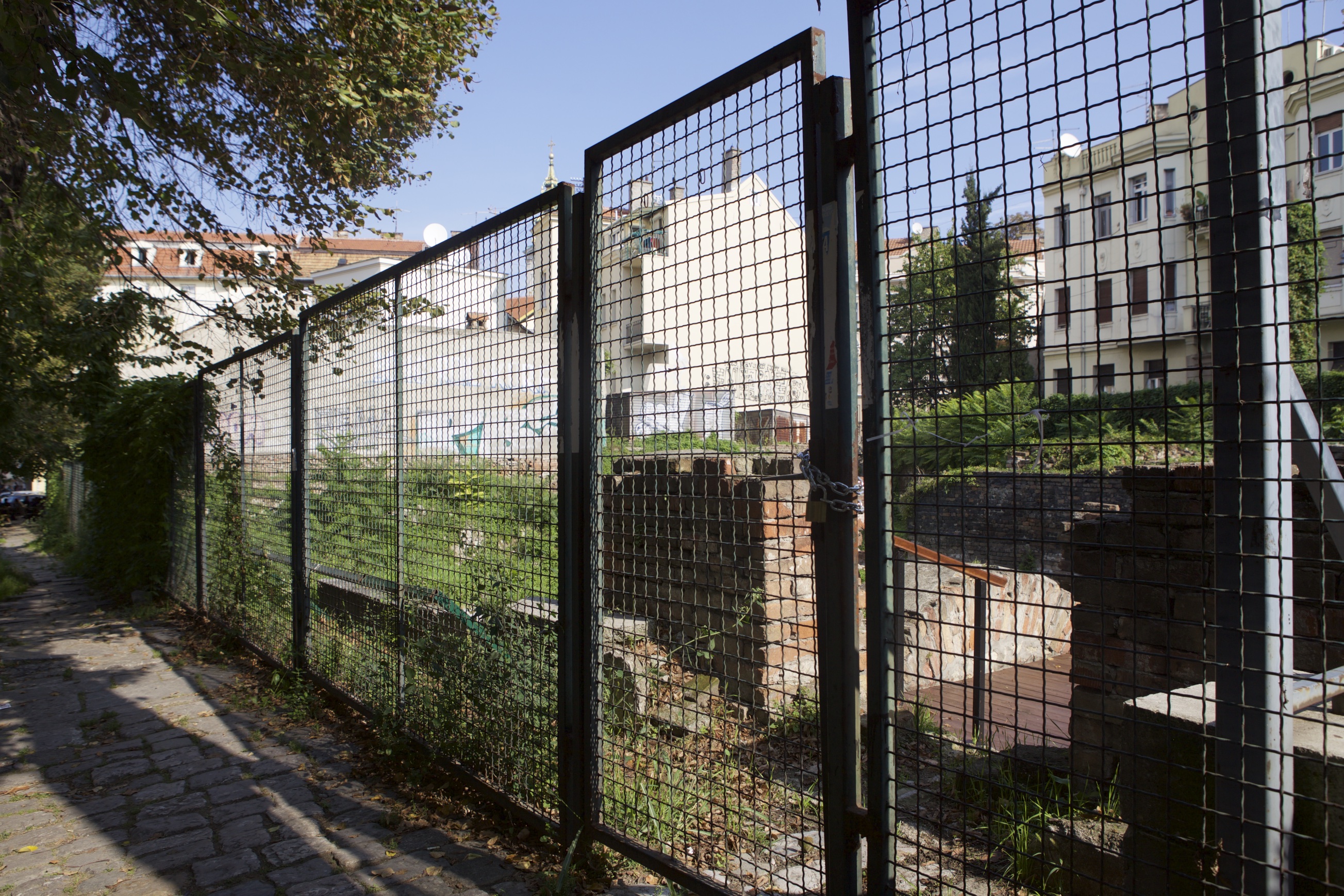
Walking few meters up a ramp we get to a to a vacant lot bounded by fences, where remnants of the foundation of a brick building appear among the vegetation. We read here the definition of City of Knowledge - the city as a cognitive environment - while Vanja tells us the story of this place. The National Library of Serbia, whose ruins is the only thing we can see nowadays, was burnt to ground on the 6th of April in 1941 by the German aviation in a bombing operation. Bombing was a consequence of Serbia's decision to refuse to sign Trilateral pact. In its destruction many important, historical documents, old maps, Ottoman manuscripts, and medieval scripts have burnt. Invaluable information, knowledge and heritage have disappeared forever in this tragedy. Every year on the 6th of April, many poets, writers, academics and citizens are coming to this place; they bring books and lay them on the ruins in sense of remembrance of the destruction of the National library of Serbia. It can be perceived as a symbolic return of the book at the place where it used to be. All the books brought here have then been collected and given to libraries with poorest funds. There used to be poster with basic information about what have happened here but it is not there anymore. Politicians have been promising for decades that a memorial site will be built on this place, but the promises remain unfulfilled. The National library of Serbia was relocated around the 1970's in a building build in Vracar, near St. Sava's Temple.
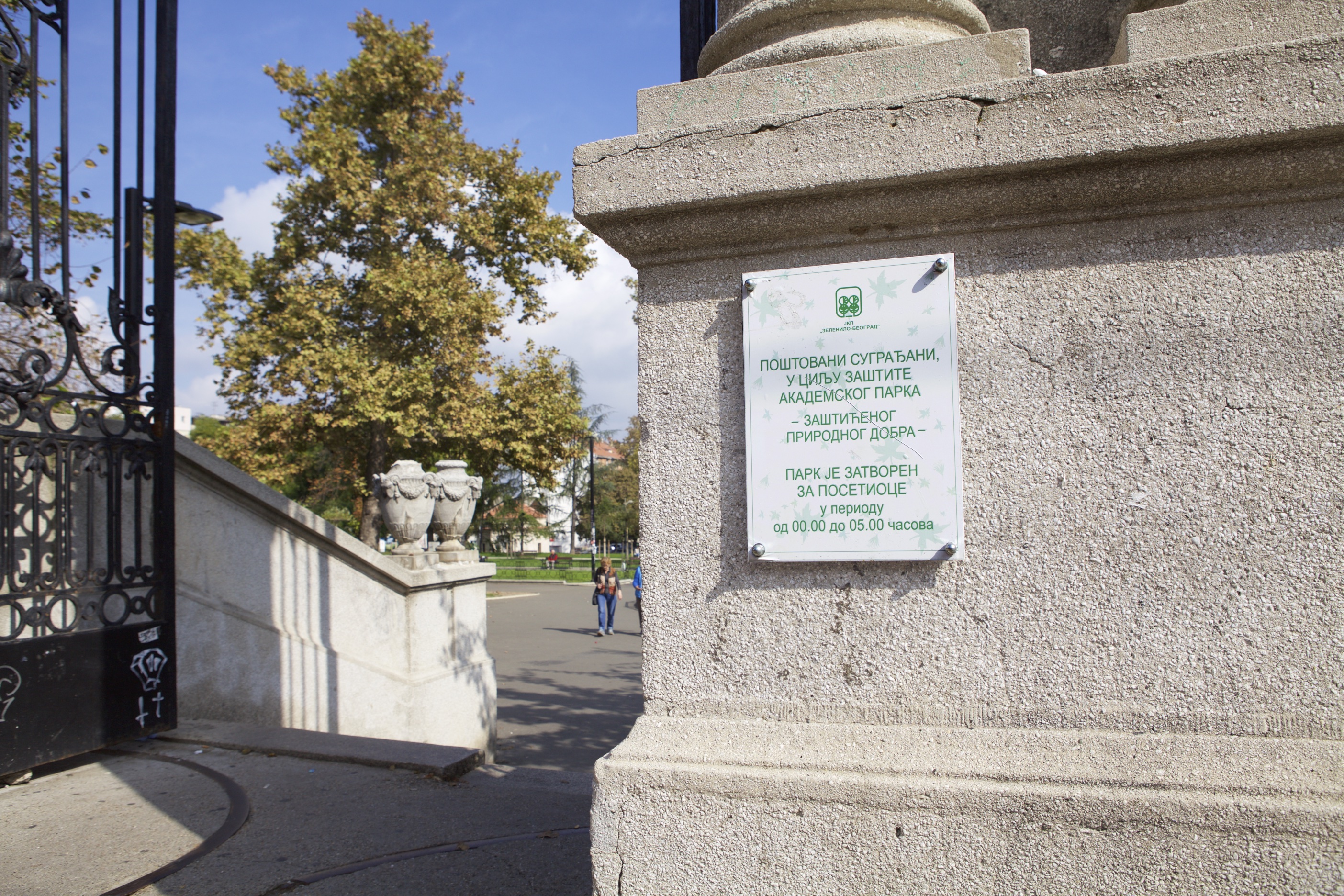
We move to the University park where we read the definition of Contested city - the city as a political construct. It is again vain to tell us the story. Before becoming a park, this place used to be a Turkish cemetery, after that a green market. Since then the meaning and purpose of this place has been debated since the first urban planner of Belgrade Emilijan Josimovic considered it worth a higher aesthetic value than a market. So, setting up the baroque gate around 1930's can be taken as the official naissance of a Academic park.
Last spring the city manager and other people from city institutions unexpectedly gave order to cut many plants and trees, which caused strong public reaction. Civil servants said it had to be done because the trees were old and sick. Some biologists and botanists deny this version and claims it does not make any sense because of many important species cut have been replaced by shortliving and invasive species, and that will certainly have bad consequences on the environment. Citizens perceived this act as a killing of the city of Belgrade, so some of them brought crosses made of wood and put them at the places where trees were before cutting. There was a protest going on about this and the decision of the city authority to lock the park gate from 00-05am. The official reason was that people gathering here make loud noise that people living around the park was complaining about; which is a bit ironic, because around the park are mostly universities and offices. Someone think they plan to build a parking instead of park, so city is still not giving any reasonable explanations for those act but citizens are ready to fight for they right to the city.
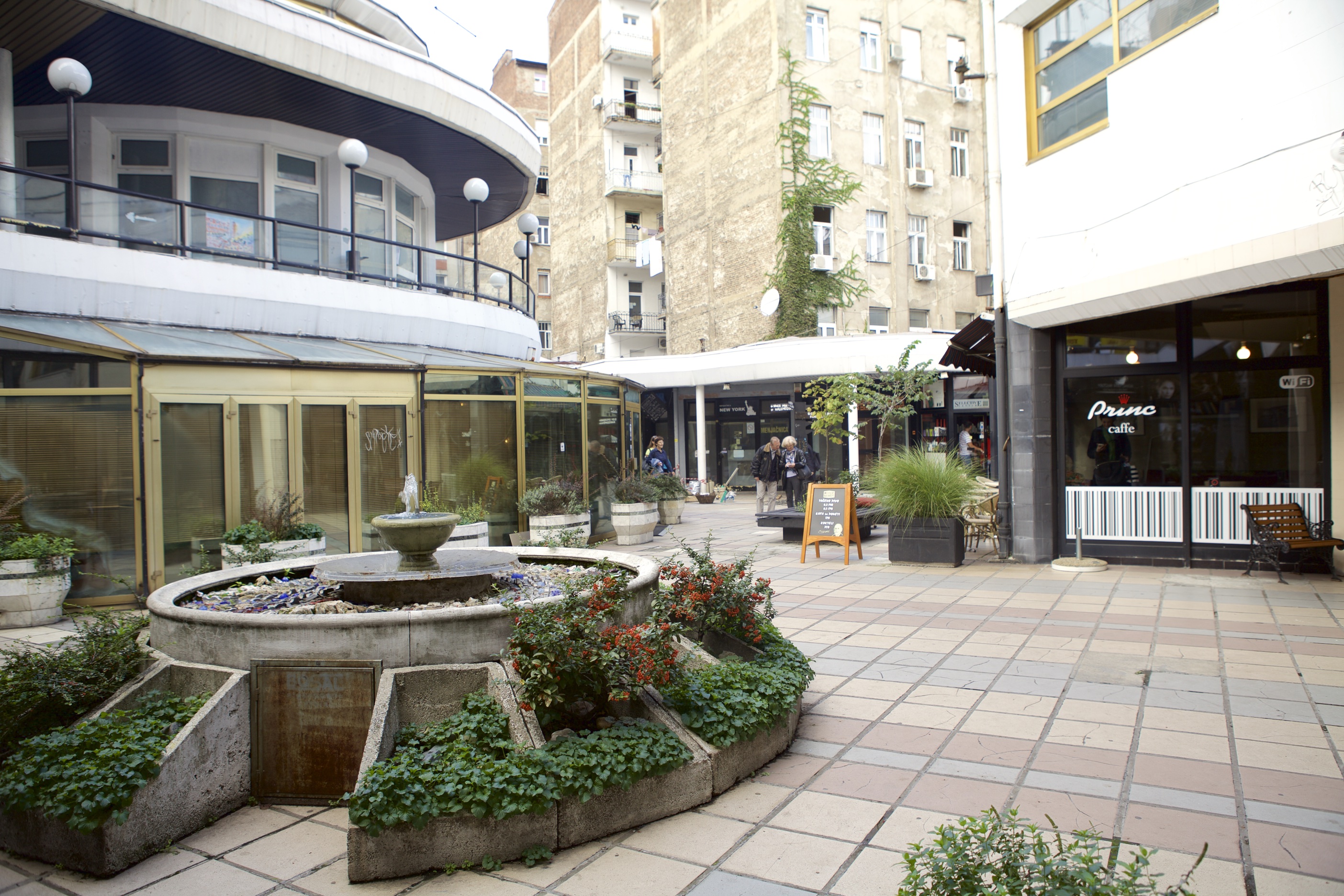
From there we move to the Republic square, that is the main central square of the city and enter the maze of internal passages. We cross an old market district that has been disrupted by new shopping malls and now turned into a design district managed by young craftsmen. Here Lorenzo reads the the definition of Public City - the city as a connective fabric. We move on until a corridor shoving a series of bulletin boards were Ksenija tells us the story of the Open Space Gallery. This passage in the past had became a no go area, used basically as a toilet and a parking. The initiative came from members of the Ministry of Space collective who proposed to the municipality to recover and use it as a public gallery for cultural events, reclaiming it to a common use. The municipality agreed on refurbishing the space and the collective received a convention for managing a regular program of exhibitions which is still going on.
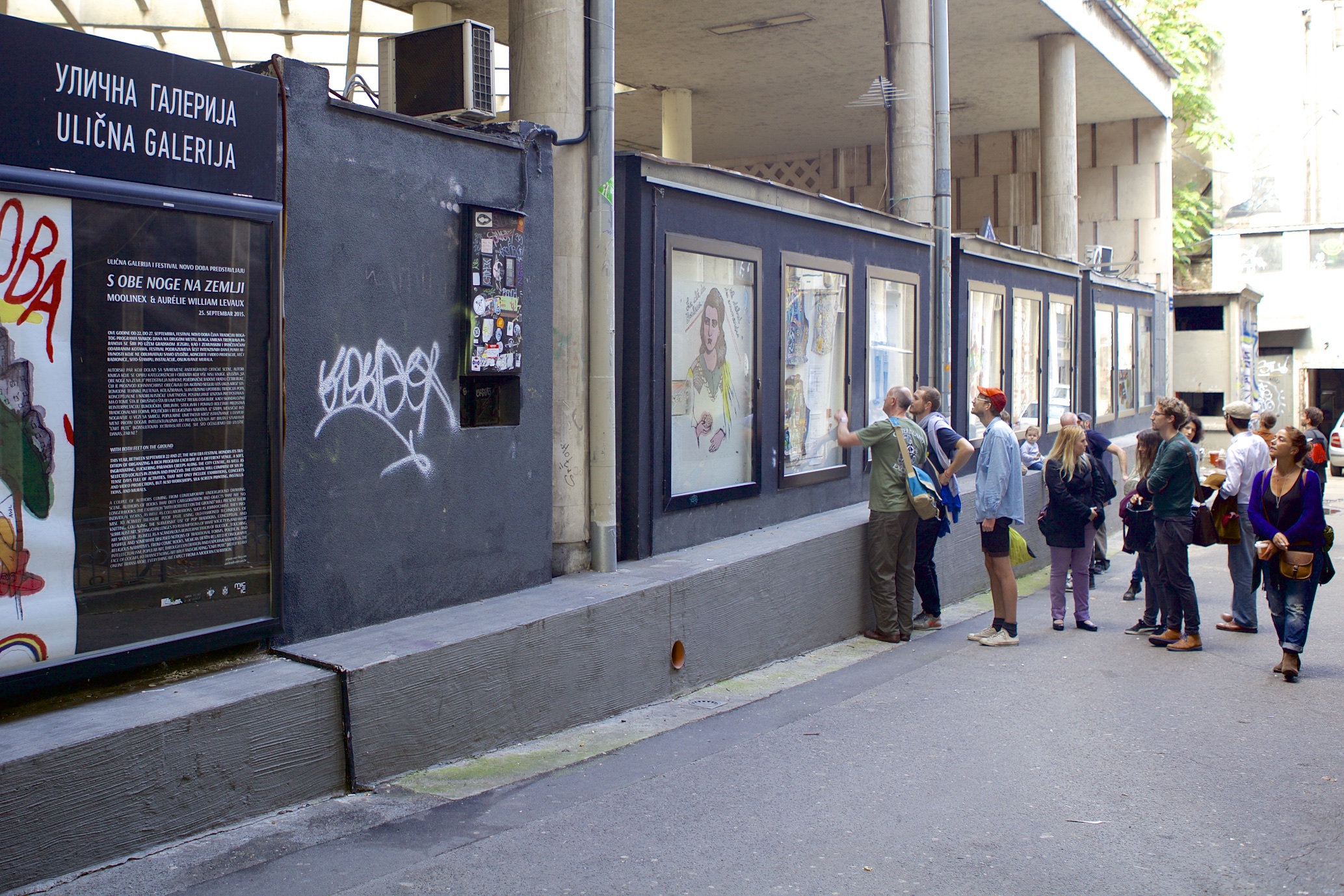
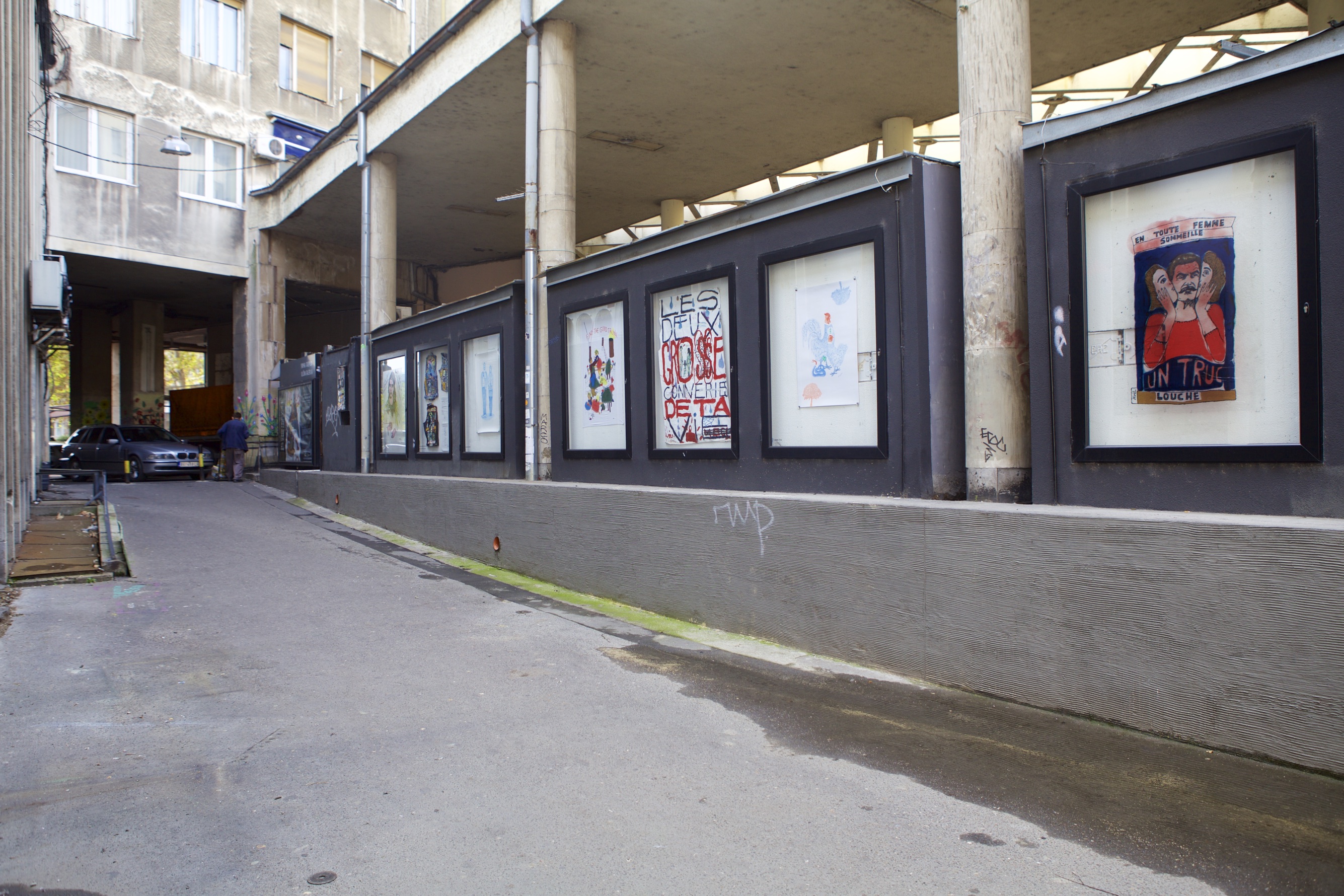
From here we move to the next stop at the Generalstab...
Text by Vanija Ristic. Pictures by Manuela Conti - Oginoknauss